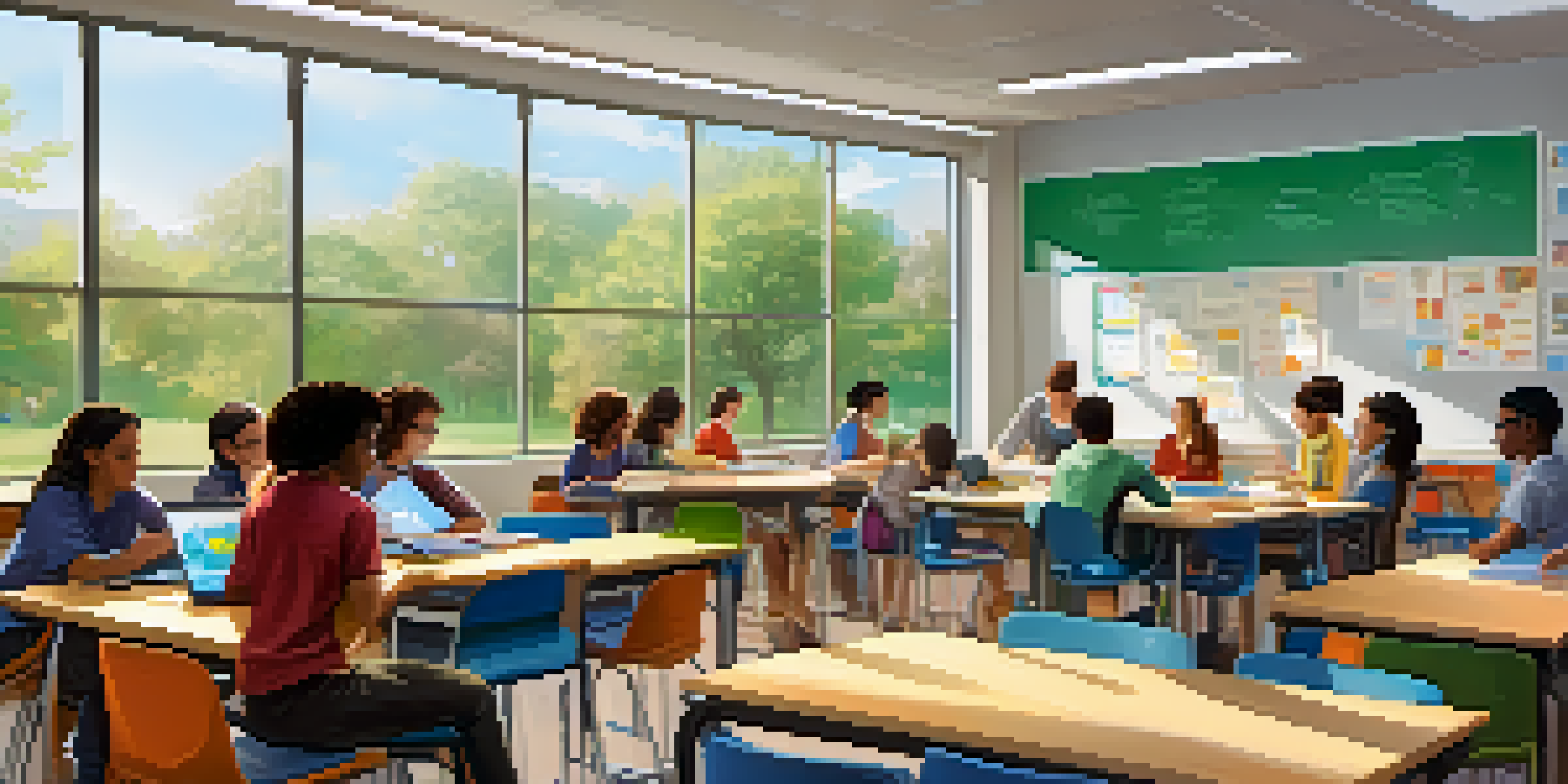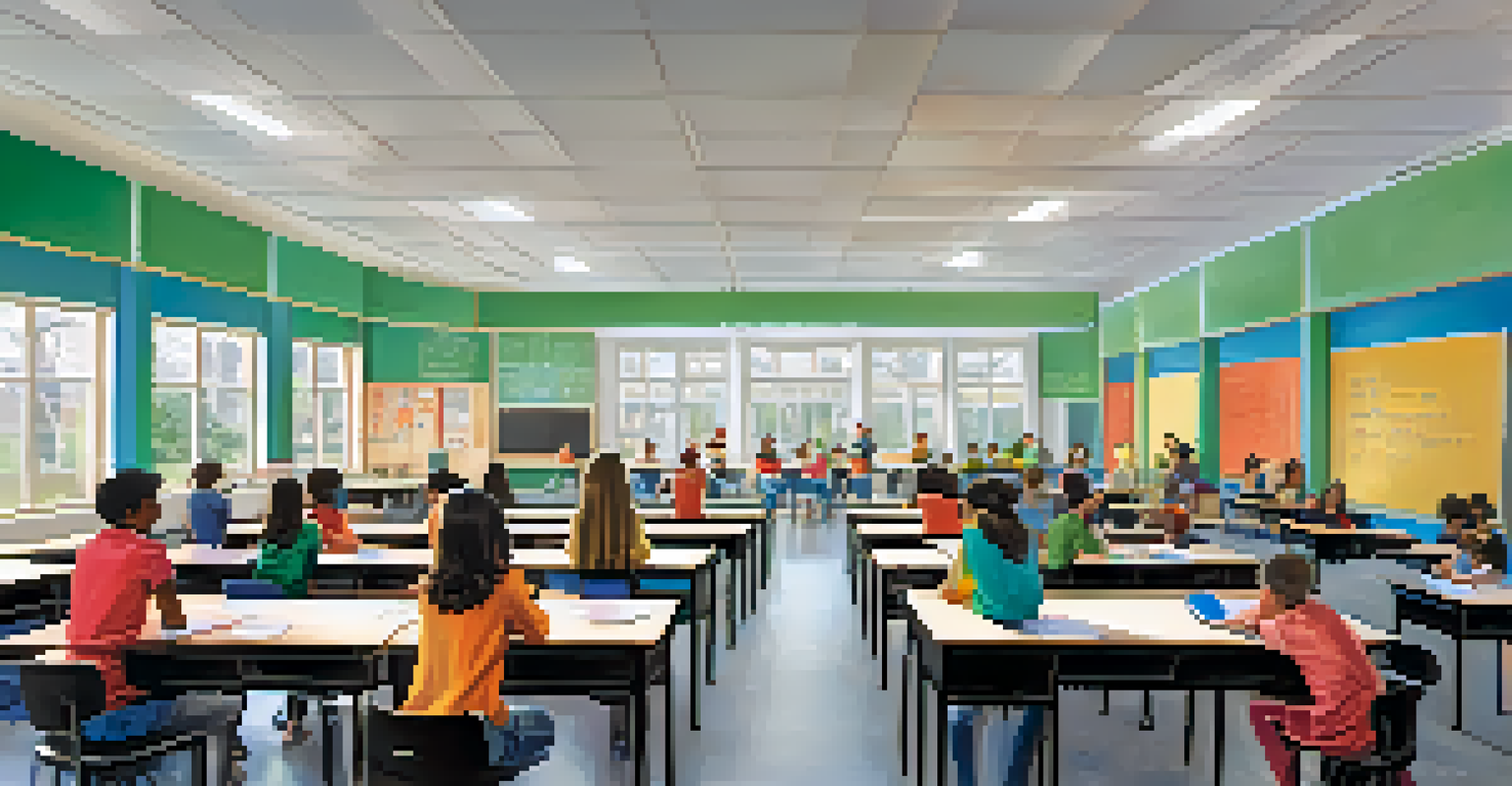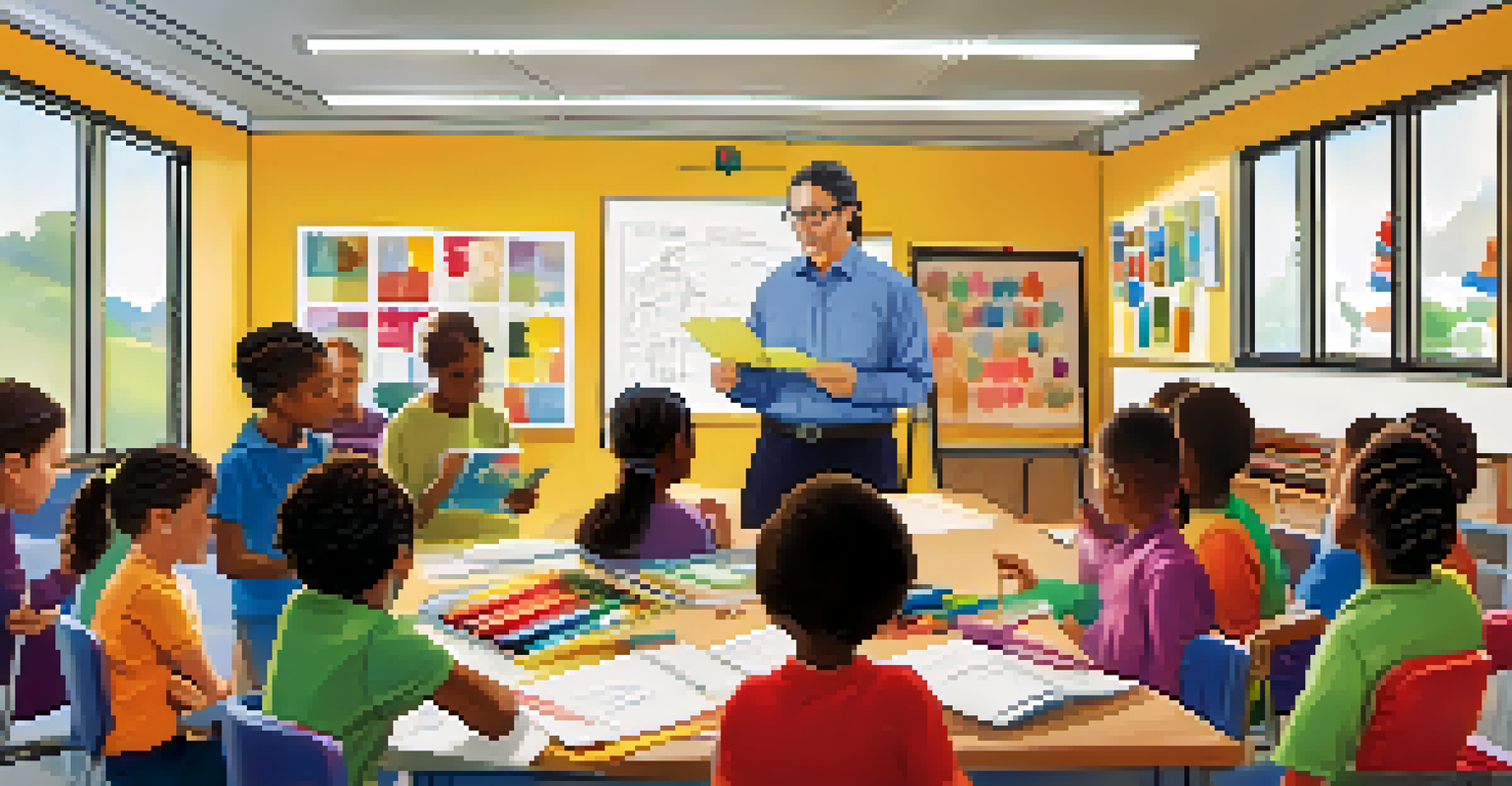Comparing Traditional vs. Student-Centered Learning

Understanding Traditional Learning: The Teacher-Centric Model
Traditional learning is often described as teacher-centered education. In this model, instructors take the lead in delivering content, while students primarily listen and take notes. The focus tends to be on memorization and standardized testing, which can sometimes stifle creativity and critical thinking.
Education is not the filling of a pail, but the lighting of a fire.
In a typical classroom setup, the teacher controls the pace and direction of lessons, often relying on lectures and textbooks. This can create a passive learning environment where students might feel less engaged or motivated. For many, this method feels familiar, having been a standard approach for generations.
However, while traditional learning might work well for conveying information efficiently, it may not cater to diverse learning styles. Students who thrive on interaction or hands-on activities may find this approach limiting, which raises important questions about its effectiveness in today’s educational landscape.
What is Student-Centered Learning? A Shift in Focus
Student-centered learning flips the traditional model on its head, placing students at the heart of the educational experience. This approach encourages active participation, where learners engage in discussions, collaborate on projects, and take responsibility for their own learning. As a result, students often develop a deeper understanding of the material.

Teachers in this model act more as facilitators or guides, providing support and resources instead of delivering content directly. This encourages critical thinking, problem-solving, and creativity, allowing students to explore topics that resonate with their interests. Imagine a classroom where students are excited to share their ideas and work together—this is the essence of student-centered learning.
Traditional Learning is Teacher-Centric
This model focuses on memorization and standardized testing, often limiting student engagement and creativity.
Moreover, student-centered learning recognizes that each student has unique needs and learning styles. By tailoring instruction based on individual preferences, this approach can lead to higher levels of engagement and achievement, making education a more inclusive experience.
Key Differences: Engagement and Interaction
One of the stark contrasts between traditional and student-centered learning is the level of engagement. In traditional settings, students may tune out during lectures, while student-centered classrooms buzz with energy and collaboration. Engaged learners often take ownership of their education, which can lead to deeper retention of knowledge.
Tell me and I forget, teach me and I remember, involve me and I learn.
Interaction plays a crucial role in student-centered environments. Students are encouraged to ask questions, share insights, and challenge ideas, fostering a rich dialogue. This contrasts sharply with traditional classrooms, where questioning may be limited, creating a one-way flow of information.
Ultimately, the difference in engagement and interaction can significantly impact a student's motivation and success. When learners feel involved and valued, they're more likely to embrace challenges and develop a lifelong love for learning.
Assessment Approaches: Testing Knowledge vs. Understanding
Assessment strategies differ greatly between traditional and student-centered learning. Traditional assessments often focus on standardized testing, measuring students’ ability to recall facts and figures. This method can create a narrow view of a student's capabilities, potentially overlooking their critical thinking and creative skills.
In contrast, student-centered assessments are often more holistic, incorporating projects, presentations, and peer evaluations. These methods allow students to demonstrate their understanding in various ways, showcasing their unique strengths and talents. Imagine a project-based assessment where students create real-world solutions—this is the kind of evaluation embraced in student-centered learning.
Student-Centered Learning Engages Students
Placing students at the heart of education fosters critical thinking and collaboration, enhancing their learning experience.
This shift in assessment not only provides a more comprehensive view of a student's progress but also aligns better with real-world skills. In a world where innovation and collaboration are key, fostering these abilities through meaningful assessments is crucial for preparing learners for future challenges.
Creating a Supportive Learning Environment
The physical and emotional environment of a classroom can greatly affect learning outcomes. In traditional classrooms, the setup is often rigid, with rows of desks facing the teacher. This arrangement may hinder collaboration and communication, making it difficult for students to engage fully with the material or each other.
Conversely, student-centered learning environments are typically designed to foster collaboration and interaction. Desks may be arranged in circles or clusters to promote group work, while technology and resources are readily available to support exploration. Such environments encourage students to feel comfortable sharing ideas, leading to a more dynamic learning atmosphere.
A supportive learning environment extends beyond physical space; it also includes emotional safety. In student-centered classrooms, educators prioritize building relationships and fostering a sense of belonging, which can significantly enhance student motivation and well-being.
Challenges and Limitations of Both Approaches
While both traditional and student-centered learning methods have their merits, they also come with challenges. Traditional learning may not cater to diverse learning styles, leaving some students feeling disengaged. Additionally, heavy reliance on standardized testing can create undue pressure and stress, ultimately affecting students' performance.
On the other hand, student-centered learning requires significant shifts in teaching philosophy and practice. Not all educators may be equipped with the skills or training to facilitate this approach effectively. Furthermore, implementing student-centered strategies can be time-consuming, and some schools may lack the necessary resources.
Blending Approaches Enhances Learning
Combining traditional and student-centered methods allows educators to cater to diverse learning styles while promoting engagement.
Recognizing these challenges is crucial for schools and educators looking to enhance their teaching methods. Balancing the strengths of both approaches may provide the most effective learning experience for students, combining structure with flexibility.
Finding the Right Balance: Blending Approaches
In an ever-evolving educational landscape, many educators are finding success by blending traditional and student-centered learning approaches. This hybrid model allows teachers to maintain structure and accountability while also fostering student engagement and creativity. For instance, a teacher might begin a lesson with a brief lecture and then transition to group discussions or hands-on activities.
This balance not only caters to different learning styles but also prepares students for various real-world scenarios. By incorporating both approaches, educators can equip learners with the knowledge they need while also encouraging critical thinking and collaboration. It’s like having the best of both worlds, ensuring that all students can thrive.

Ultimately, the goal is to create a learning experience that is effective, inclusive, and engaging. By thoughtfully combining elements of both traditional and student-centered learning, educators can better meet the diverse needs of their students and prepare them for success in life.